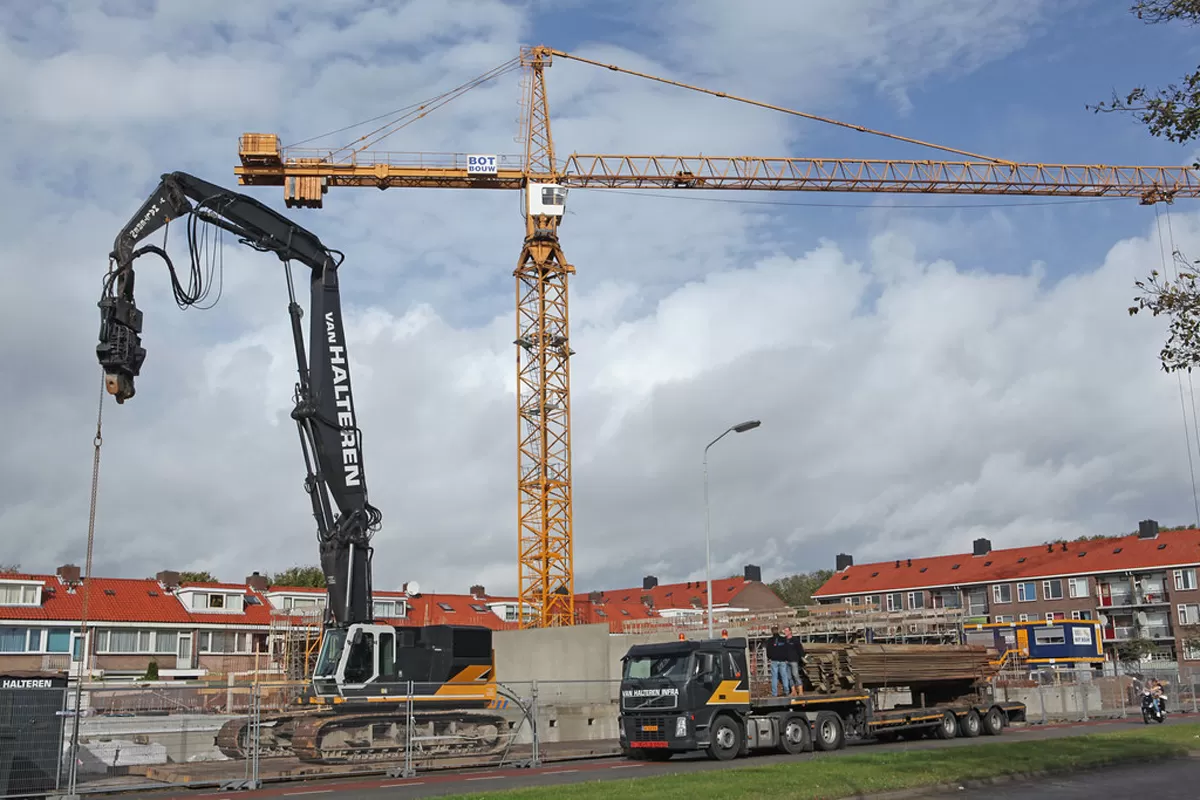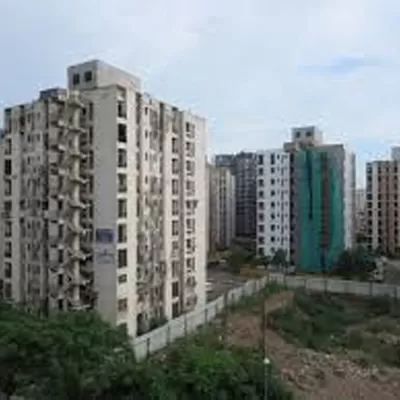- Home
- Real Estate
- Welcome Bye-Laws

Welcome Bye-Laws
It´s a wave of change after 33 years for a country that has been grappling with a plethora of laws that are not uniform across its 29 states and seven union territories. The recent release of the Model Building Bye-Laws by the Ministry of Urban Development has brought in a much-needed ray of hope to the real-estate sector; now, states need to come on board. ´The move aims to ease the process for acquiring building permits, no-objection certificates (NOCs) and completion-cum-occupancy certificate by reducing paperwork, timelines and fixing accountability on the urban local body´s response time. The provisions also seek to address safe, eco-friendly and sustainable construction,´ says Santhosh Kumar, CEO-Operations & International Director, JLL India. The Bye-Laws provide for three categories of buildings: 5,000 to 20,000 sq m; 20,000 to 50,000 sq m; and 50,000 to 150,000 sq m. Based on built-up area, a different set of environmental conditions are provided for each category.
Recording reactions
These Bye-Laws have certainly boosted the sentiments of the real-estate sector. ´The Central Government is trying to ensure the right policy framework for state governments and local urban bodies and outline the right mix of rules of engagement to create a planned urban habitat,´ says T Chitty Babu, Chairman & CEO, Akshaya. ´These guidelines are also directly linked to us developers; how much we understand, interpret and adopt them in our application submission will help streamline the process.´
Rajesh Prajapati, Managing Director, Prajapati Constructions, agrees that the Bye-Laws have been prepared keeping in mind both the consumers and the developers´ interest. He says, ´The state governments should adopt them as soon as possible.´
Harjith D Bubber, Managing Director & CEO, Rivali Park, CCI Projects, believes the Bye-Laws will help boost the functionality of business and operations in real estate. He says, ´They will provide a structured framework and smooth approvals of single-window integrated process of building plans.´ And Sumit Chatterjee, COO, Raheja Developers, says, ´The Bye-Laws are a watershed step forward in shaping the skyline of our urban landscape while simultaneously bringing in transparency, accountability and speed in the process. They also pave the way for caring for the environment.´
Agreeing that this proposal will facilitate a structured framework for single-window approval, Neeraj Gulati, Managing Director, Assotech Realty, says, ´It will permit construction on residential plots below certain area without any requirement of getting building plans cleared.´ He points out that with the new Bye-Laws, the owners only need to submit an undertaking about the construction along with requisite fees and other documents to begin construction.
And Kruti Jain, Director, Kumar Urban Development (KUL), says, ´The Bye-Laws will bring about safer structures equipped to deal with fires, earthquakes and other natural calamities. They will pave the path to planned development, which will facilitate ease of doing business.´
For his part, while Rohit Gera, Managing Director, Gera Developments, accepts that the Bye-Laws contain some excellent provisions, he says, ´There are a number of provisions that could be impractical and blanket adoption across states or cities will be impossible. For example, rainwater harvesting, where there is a high water table, does not make sense.´
Ease of approvals
Single-window approvals have been an age-old demand. Currently, there are various clearances required from various agencies before initiating a project. Besides state-based agencies, investors in certain projects require clearances from central ministries, including defence, civil aviation, environment and forests, culture and consumer affairs as per the case. Paused approvals and permissions have led to delay in deliveries.
But now, the simplified process for online approvals proposed in these Bye-Laws is bringing a sigh of relief to the real-estate sector. Kumar says, ´This is further aided by the Ministry of Environment, Forests & Climate Change´s acceptance to integrate approvals by agreeing to empower urban local bodies to accord environmental clearance for built-up area up to 150,000 sq m, which otherwise had to be obtained at state-level authority under the ministry.´
The law intends to create an online administrative process to ensure single-window clearances of construction projects and to make the system corruption-proof; this eliminates person-to-person interaction of the applicant with the urban local body. The time limit for approvals proposed in the model regulations is a maximum of 30 days, failing which, the plan would be deemed to be approved. The new Bye-Laws also allow the applicant to fill one centralised online form; the application would automatically be forwarded to the agencies concerned, such as the Municipal Corporation of Delhi, Delhi Jal Board, Fire Department, etc.
Kumar further adds, ´Approvals or NOCs by external agencies like AAI, NMA, Delhi Fire Services, DMRC, Ministry of Environment, etc, shall be issued within 15 days. The number of documents to be submitted for obtaining building permits has been reduced from 40 to 14. The procedure for obtaining the completion-cum-occupancy certificate has been simplified by reducing the number of documents to be submitted by the owner from 36 to nine.´
´Single-window will result in timely handovers to customers,´ says Bubber. To this, Gulati adds, ´This will help us achieve speed and be useful in updating building Bye-Laws in terms of contemporary urban trends, making them more inclusive and user-friendly.´ Jain, too, is optimistic, saying, ´If this process of single-window approvals were to go online, it would further lower our costs, speed up the process of clearances and permit the commencement of the project in a timely manner.´
Today, it can take up to a year to secure approvals, that too with multiple follow-ups. Chatterjee says, ´Any digital framework that provides for online approval, automated plan scrutiny, generation of reports and integrated intimation of approval is a giant leap forward. It will make the entire process faster, transparent and significantly enhance speed.´
Gera says, ´If single-window clearance eliminates corruption and speeds up the approval process, it is most welcome in cases where managing the process was the core competence of the developer. It will lead to developers needing to change their entire business model.´ And Prajapati suggests, ´Along with applying online, NOCs and commencement certificates should be sanctioned online as well. This will reduce corruption and bring in transparency.´
As for the single-window process, Babu says, ´We developers need to submit all plans correctly, else it will not work. It takes two hands to clap; we need to work more closely with local governing bodies to ensure this works every time.´
Planning tall and green
These Bye-Laws will also enable green building if adhered to, given their emphasis on the environment. There will also be fewer tall buildings, given safety hazards such as fire brigades being unable to put out fires on the 50th floor or entering a narrow lane, etc.
Chatterjee says, ´As the height of buildings is subject to restrictions set by a regional or zonal master plan and civil aviation authorities, and provisions of FAR, a lot depends on the state and regional aviation authorities to relax height restrictions.´ As for green buildings, he says, ´A lot of emphasis has been given to renewable energy, preparation of landscape plan for submission to authority and open or landscaped areas.´
Babu affirms, ´This will definitely help create green buildings, but tall buildings need a lot more to be green and solar energy will add more value to the proposition.´ However, Jain is definite that the impact will be considerable if home buyers become aware of these laws and developers carry out projects with integrity. And, Gulati points out: ´The new model building Bye-Laws offer incentives to real-estate developers for adopting smart energy solutions.´ Giving a major push to clean energy, this provision will maximise utilisation of rooftop space for solar energy generation for consumers with multiple buildings and service connection.
Opening markets
Indeed, India has over 200 days of sunlight that can be harvested; turning rooftops into possible energy generators holds immense possibility. The model building Bye-Laws mandate new buildings to have solar rooftop power generation. Gulati says, ´This will provide access to reliable, green and sustainable energy.´ Babu adds, ´Bringing smart grids into play that can evacuate surplus power back into the grid is still work in progress and will take time, but that need not stop developers from incorporating solar rooftops to generate free solar power.´
The Bye-Laws also provide for mandatory rainwater harvesting for various types of buildings, which will be monitored by a special cell in each civic body including provisions for fire safety, structural safety, earthquake and natural disaster safety. Provisions for the elderly, physically-challenged and children have also found place in the Bye-Laws. Gulati says, ´This gives immense opportunity for related vendors to offer modules, products and incentives in the form of discounts and tax rebates to those complying with green norms.´ Gera sees this as a good opportunity not only for related vendors but all sorts of consultants and service providers. And, Chatterjee shares, ´This is good for the ecosystem as more business typically attracts better technology and price and positively impacts the economy.´
Prajapati sees a two-fold advantage. He says, ´Along with an opportunity for vendors, adopting non-conventional methods will help nation-building by reducing the load on conventional energy and producing mechanisms such as dams, etc, where electricity is produced.´
He also adds that the government could encourage builders by way of incentives.
Impact on realty
While one is yet to see the impact of these Bye-Laws on real estate, once they are adopted by states, the result is expected to be positive.
Jain avers that the laws will help the sector flourish and allow builders to win the goodwill of potential buyers. Looking forward to 2020 and beyond, Gulati says, ´The real-estate investment industry will find itself at the centre of rapid economic and social change, which is transforming the built environment.´ The Bye-Laws will increase the pace of real-estate development as municipal corporations can permit mobile towers in residential areas with due safeguards. It will also benefit states attracting more investments and employment opportunities.
Babu calls it a ´dream come true´ for developers who have been insisting on single-window clearance of plans and online submission with minimum human interface to reduce grey areas and greasing business. He adds, ´It will allow us to focus on our business of creating and delivering a sustainable habitat.´ Certainly, the 30-day limit for local bodies to approve submitted plans will help reduce the time to construct and bring down the cost of construction.
For Chatterjee, ´transparency´ and ´accountability´ are the two key benefits, not just for the real-estate sector but consumers and authorities too. He says, ´It will lead to streamlined processing and execution of projects, while reducing delays, escalation and wastage of time and materials.
Here, Gera makes an interesting point, when he says, ´The model Bye-Laws will lead to the need for advance planning, and as such will end up delaying projects from being submitted to local authorities for approval. The benefit, though, is that once the plan has all the details, it is only a matter of implementation thereafter. The bigger issue, however, would be the capability of people at the approving authority level to have the requisite qualifications to assess the plans from the numerous perspectives defined in the Bye-Laws.´
But Bubber is sure that when implemented, the effect will be quick. He says, ´We all know that delay in approvals contributes to delay in completion of the projects, giving the brand a bad name.´
Achieving larger goals
On a broader level, the Model Building Bye-Laws 2016 also aim to improve ease of doing business among state governments and urban local bodies û a priority for the Centre. Consider the fact that in a worldwide survey that ranked 189 countries on ´ease of business´, India came in at a dismal 184! Easier processes in business would certainly lead to the nation´s progress.
´Over the past year, we have seen the Central Government taking more mundane and routine engagements into the online space,´ says Babu. ´Minimum government and maximum governance is the end objective.´ Jain believes that the online process proposed in the Bye-Laws can be extended outside the real-estate world to international trade companies, tech startups, etc. She says, ´Its emphasis on the environment too can be applied across all occupation.´ And Chatterjee adds, ´Any system available online is by and large transparent, process-driven and fixes accountability at every part of the food chain. It also greatly facilitates curbing corrupt practices.´
Prajapati sees the implementation of ease of doing business and skilled India yet to take off in a major way. ´If the model by-laws are implemented by state governments, it will be a step towards the implementation of ease of doing business and the Make in India programme,´ he says.
All considered, the introduction of the Bye-Laws is a significant step in improving ease of doing business and making the country future-ready. It´s time to get going with the grassroots work.
Quick Bytes
- Aim: To ease process for acquiring building permits, NOCs and occupancy certificate.
- Adopting non-conventional methods to produce energy will help nation-building.
- Mandate: New buildings to have solar rooftop power generation, providing access to reliable, green and sustainable energy.
- Need: Developers to work closely with local governing bodies to ensure single-window clearances works.
Salient features of Model Building Bye-Laws 2016
Safety and security: Includes structural safety, disaster management as per Prof Arya Committee Report and BIS codes including Structural Design Basis Report (SDBR) for various building types; prevention measures against ´soft storeys´ in multi-storied buildings and proof checking of structural design for buildings.
Barrier-free environment: Provisions for differently-abled, elderly and children including site development, access path or walkway, parking, building requirements, stair, lifts, toilets, drinking water, refuge and signage.
Environmental concerns: Green buildings and sustainability provisions, rainwater harvesting, wastewater reuse and recycle and installation of solar rooftop PV norms. Adoption of modern construction technology: Definitions, structural safety and other provisions for high-rise building regulations with parking, peripheral open spaces including setbacks; disaster management and fire safety.
Swachh Bharat Mission: Revised norms for adequate toilet facilities for women and public conveniences in public buildings and mandatory provisions for segregated toilet facilities for visitors in public buildings.
Ease of doing business: Provision for online building plan approval process adopting automated systems of plan scrutiny, generation of reports or approvals and integrated systems of intimation of approval, compliance report from drawings for automatic generation of completion certificate and integration of various clearances at master plan levels and introduction of integrating single-window process, empowering architects, outsourcing non-discretionary verification jobs and formulation of citizen´s charter.
Rainwater harvesting: Provisions for harvesting in various types of buildings along with responsibility of ULBs for RWH in public spaces, provisions for enforcement and monitoring.
Effects of communication technology: Draft guidelines for mitigation of electromagnetic radiation in built spaces by identifying emission appliances or sources; guidelines for safe spacing of indoor and outdoor appliances and equipment.
- SHRIYAL SETHUMADHAVAN
To share your views on this article, write in at feedback@constructionworld.in
- Ministry of Urban Development
- Model Building Bye-Laws 2016
- NOC
- Santhosh Kumar
- JLL India
- T Chitty Babu
- Akshaya
- Rajesh Prajapati
- Prajapati Constructions
- Harjith D Bubber
- Rivali Park
- CCI Projects
- Sumit Chatterjee
- Raheja Developers
- Neeraj Gulati
- Assotech Realty
- Kruti Jain
- Kumar Urban Development
- Rohit Gera
- Gera Developments
- Defence
- Civil aviation
- Environment
- Forests
- Ministr
The Ministry of Urban Development recently released the Model Building Bye-Laws 2016. However, while the realty sector is hopeful, actual implementation lies at the level of the state and local bodies. It´s a wave of change after 33 years for a country that has been grappling with a plethora of laws that are not uniform across its 29 states and seven union territories. The recent release of the Model Building Bye-Laws by the Ministry of Urban Development has brought in a much-needed ray of hope to the real-estate sector; now, states need to come on board. ´The move aims to ease the process for acquiring building permits, no-objection certificates (NOCs) and completion-cum-occupancy certificate by reducing paperwork, timelines and fixing accountability on the urban local body´s response time. The provisions also seek to address safe, eco-friendly and sustainable construction,´ says Santhosh Kumar, CEO-Operations & International Director, JLL India. The Bye-Laws provide for three categories of buildings: 5,000 to 20,000 sq m; 20,000 to 50,000 sq m; and 50,000 to 150,000 sq m. Based on built-up area, a different set of environmental conditions are provided for each category. Recording reactions These Bye-Laws have certainly boosted the sentiments of the real-estate sector. ´The Central Government is trying to ensure the right policy framework for state governments and local urban bodies and outline the right mix of rules of engagement to create a planned urban habitat,´ says T Chitty Babu, Chairman & CEO, Akshaya. ´These guidelines are also directly linked to us developers; how much we understand, interpret and adopt them in our application submission will help streamline the process.´ Rajesh Prajapati, Managing Director, Prajapati Constructions, agrees that the Bye-Laws have been prepared keeping in mind both the consumers and the developers´ interest. He says, ´The state governments should adopt them as soon as possible.´ Harjith D Bubber, Managing Director & CEO, Rivali Park, CCI Projects, believes the Bye-Laws will help boost the functionality of business and operations in real estate. He says, ´They will provide a structured framework and smooth approvals of single-window integrated process of building plans.´ And Sumit Chatterjee, COO, Raheja Developers, says, ´The Bye-Laws are a watershed step forward in shaping the skyline of our urban landscape while simultaneously bringing in transparency, accountability and speed in the process. They also pave the way for caring for the environment.´ Agreeing that this proposal will facilitate a structured framework for single-window approval, Neeraj Gulati, Managing Director, Assotech Realty, says, ´It will permit construction on residential plots below certain area without any requirement of getting building plans cleared.´ He points out that with the new Bye-Laws, the owners only need to submit an undertaking about the construction along with requisite fees and other documents to begin construction. And Kruti Jain, Director, Kumar Urban Development (KUL), says, ´The Bye-Laws will bring about safer structures equipped to deal with fires, earthquakes and other natural calamities. They will pave the path to planned development, which will facilitate ease of doing business.´ For his part, while Rohit Gera, Managing Director, Gera Developments, accepts that the Bye-Laws contain some excellent provisions, he says, ´There are a number of provisions that could be impractical and blanket adoption across states or cities will be impossible. For example, rainwater harvesting, where there is a high water table, does not make sense.´ Ease of approvals Single-window approvals have been an age-old demand. Currently, there are various clearances required from various agencies before initiating a project. Besides state-based agencies, investors in certain projects require clearances from central ministries, including defence, civil aviation, environment and forests, culture and consumer affairs as per the case. Paused approvals and permissions have led to delay in deliveries. But now, the simplified process for online approvals proposed in these Bye-Laws is bringing a sigh of relief to the real-estate sector. Kumar says, ´This is further aided by the Ministry of Environment, Forests & Climate Change´s acceptance to integrate approvals by agreeing to empower urban local bodies to accord environmental clearance for built-up area up to 150,000 sq m, which otherwise had to be obtained at state-level authority under the ministry.´ The law intends to create an online administrative process to ensure single-window clearances of construction projects and to make the system corruption-proof; this eliminates person-to-person interaction of the applicant with the urban local body. The time limit for approvals proposed in the model regulations is a maximum of 30 days, failing which, the plan would be deemed to be approved. The new Bye-Laws also allow the applicant to fill one centralised online form; the application would automatically be forwarded to the agencies concerned, such as the Municipal Corporation of Delhi, Delhi Jal Board, Fire Department, etc. Kumar further adds, ´Approvals or NOCs by external agencies like AAI, NMA, Delhi Fire Services, DMRC, Ministry of Environment, etc, shall be issued within 15 days. The number of documents to be submitted for obtaining building permits has been reduced from 40 to 14. The procedure for obtaining the completion-cum-occupancy certificate has been simplified by reducing the number of documents to be submitted by the owner from 36 to nine.´ ´Single-window will result in timely handovers to customers,´ says Bubber. To this, Gulati adds, ´This will help us achieve speed and be useful in updating building Bye-Laws in terms of contemporary urban trends, making them more inclusive and user-friendly.´ Jain, too, is optimistic, saying, ´If this process of single-window approvals were to go online, it would further lower our costs, speed up the process of clearances and permit the commencement of the project in a timely manner.´ Today, it can take up to a year to secure approvals, that too with multiple follow-ups. Chatterjee says, ´Any digital framework that provides for online approval, automated plan scrutiny, generation of reports and integrated intimation of approval is a giant leap forward. It will make the entire process faster, transparent and significantly enhance speed.´ Gera says, ´If single-window clearance eliminates corruption and speeds up the approval process, it is most welcome in cases where managing the process was the core competence of the developer. It will lead to developers needing to change their entire business model.´ And Prajapati suggests, ´Along with applying online, NOCs and commencement certificates should be sanctioned online as well. This will reduce corruption and bring in transparency.´ As for the single-window process, Babu says, ´We developers need to submit all plans correctly, else it will not work. It takes two hands to clap; we need to work more closely with local governing bodies to ensure this works every time.´ Planning tall and green These Bye-Laws will also enable green building if adhered to, given their emphasis on the environment. There will also be fewer tall buildings, given safety hazards such as fire brigades being unable to put out fires on the 50th floor or entering a narrow lane, etc. Chatterjee says, ´As the height of buildings is subject to restrictions set by a regional or zonal master plan and civil aviation authorities, and provisions of FAR, a lot depends on the state and regional aviation authorities to relax height restrictions.´ As for green buildings, he says, ´A lot of emphasis has been given to renewable energy, preparation of landscape plan for submission to authority and open or landscaped areas.´ Babu affirms, ´This will definitely help create green buildings, but tall buildings need a lot more to be green and solar energy will add more value to the proposition.´ However, Jain is definite that the impact will be considerable if home buyers become aware of these laws and developers carry out projects with integrity. And, Gulati points out: ´The new model building Bye-Laws offer incentives to real-estate developers for adopting smart energy solutions.´ Giving a major push to clean energy, this provision will maximise utilisation of rooftop space for solar energy generation for consumers with multiple buildings and service connection. Opening markets Indeed, India has over 200 days of sunlight that can be harvested; turning rooftops into possible energy generators holds immense possibility. The model building Bye-Laws mandate new buildings to have solar rooftop power generation. Gulati says, ´This will provide access to reliable, green and sustainable energy.´ Babu adds, ´Bringing smart grids into play that can evacuate surplus power back into the grid is still work in progress and will take time, but that need not stop developers from incorporating solar rooftops to generate free solar power.´ The Bye-Laws also provide for mandatory rainwater harvesting for various types of buildings, which will be monitored by a special cell in each civic body including provisions for fire safety, structural safety, earthquake and natural disaster safety. Provisions for the elderly, physically-challenged and children have also found place in the Bye-Laws. Gulati says, ´This gives immense opportunity for related vendors to offer modules, products and incentives in the form of discounts and tax rebates to those complying with green norms.´ Gera sees this as a good opportunity not only for related vendors but all sorts of consultants and service providers. And, Chatterjee shares, ´This is good for the ecosystem as more business typically attracts better technology and price and positively impacts the economy.´ Prajapati sees a two-fold advantage. He says, ´Along with an opportunity for vendors, adopting non-conventional methods will help nation-building by reducing the load on conventional energy and producing mechanisms such as dams, etc, where electricity is produced.´ He also adds that the government could encourage builders by way of incentives. Impact on realty While one is yet to see the impact of these Bye-Laws on real estate, once they are adopted by states, the result is expected to be positive. Jain avers that the laws will help the sector flourish and allow builders to win the goodwill of potential buyers. Looking forward to 2020 and beyond, Gulati says, ´The real-estate investment industry will find itself at the centre of rapid economic and social change, which is transforming the built environment.´ The Bye-Laws will increase the pace of real-estate development as municipal corporations can permit mobile towers in residential areas with due safeguards. It will also benefit states attracting more investments and employment opportunities. Babu calls it a ´dream come true´ for developers who have been insisting on single-window clearance of plans and online submission with minimum human interface to reduce grey areas and greasing business. He adds, ´It will allow us to focus on our business of creating and delivering a sustainable habitat.´ Certainly, the 30-day limit for local bodies to approve submitted plans will help reduce the time to construct and bring down the cost of construction. For Chatterjee, ´transparency´ and ´accountability´ are the two key benefits, not just for the real-estate sector but consumers and authorities too. He says, ´It will lead to streamlined processing and execution of projects, while reducing delays, escalation and wastage of time and materials. Here, Gera makes an interesting point, when he says, ´The model Bye-Laws will lead to the need for advance planning, and as such will end up delaying projects from being submitted to local authorities for approval. The benefit, though, is that once the plan has all the details, it is only a matter of implementation thereafter. The bigger issue, however, would be the capability of people at the approving authority level to have the requisite qualifications to assess the plans from the numerous perspectives defined in the Bye-Laws.´ But Bubber is sure that when implemented, the effect will be quick. He says, ´We all know that delay in approvals contributes to delay in completion of the projects, giving the brand a bad name.´ Achieving larger goals On a broader level, the Model Building Bye-Laws 2016 also aim to improve ease of doing business among state governments and urban local bodies û a priority for the Centre. Consider the fact that in a worldwide survey that ranked 189 countries on ´ease of business´, India came in at a dismal 184! Easier processes in business would certainly lead to the nation´s progress. ´Over the past year, we have seen the Central Government taking more mundane and routine engagements into the online space,´ says Babu. ´Minimum government and maximum governance is the end objective.´ Jain believes that the online process proposed in the Bye-Laws can be extended outside the real-estate world to international trade companies, tech startups, etc. She says, ´Its emphasis on the environment too can be applied across all occupation.´ And Chatterjee adds, ´Any system available online is by and large transparent, process-driven and fixes accountability at every part of the food chain. It also greatly facilitates curbing corrupt practices.´ Prajapati sees the implementation of ease of doing business and skilled India yet to take off in a major way. ´If the model by-laws are implemented by state governments, it will be a step towards the implementation of ease of doing business and the Make in India programme,´ he says. All considered, the introduction of the Bye-Laws is a significant step in improving ease of doing business and making the country future-ready. It´s time to get going with the grassroots work. Quick Bytes Aim: To ease process for acquiring building permits, NOCs and occupancy certificate. Adopting non-conventional methods to produce energy will help nation-building. Mandate: New buildings to have solar rooftop power generation, providing access to reliable, green and sustainable energy. Need: Developers to work closely with local governing bodies to ensure single-window clearances works. Salient features of Model Building Bye-Laws 2016 Safety and security: Includes structural safety, disaster management as per Prof Arya Committee Report and BIS codes including Structural Design Basis Report (SDBR) for various building types; prevention measures against ´soft storeys´ in multi-storied buildings and proof checking of structural design for buildings. Barrier-free environment: Provisions for differently-abled, elderly and children including site development, access path or walkway, parking, building requirements, stair, lifts, toilets, drinking water, refuge and signage. Environmental concerns: Green buildings and sustainability provisions, rainwater harvesting, wastewater reuse and recycle and installation of solar rooftop PV norms. Adoption of modern construction technology: Definitions, structural safety and other provisions for high-rise building regulations with parking, peripheral open spaces including setbacks; disaster management and fire safety. Swachh Bharat Mission: Revised norms for adequate toilet facilities for women and public conveniences in public buildings and mandatory provisions for segregated toilet facilities for visitors in public buildings. Ease of doing business: Provision for online building plan approval process adopting automated systems of plan scrutiny, generation of reports or approvals and integrated systems of intimation of approval, compliance report from drawings for automatic generation of completion certificate and integration of various clearances at master plan levels and introduction of integrating single-window process, empowering architects, outsourcing non-discretionary verification jobs and formulation of citizen´s charter. Rainwater harvesting: Provisions for harvesting in various types of buildings along with responsibility of ULBs for RWH in public spaces, provisions for enforcement and monitoring. Effects of communication technology: Draft guidelines for mitigation of electromagnetic radiation in built spaces by identifying emission appliances or sources; guidelines for safe spacing of indoor and outdoor appliances and equipment. - SHRIYAL SETHUMADHAVAN To share your views on this article, write in at feedback@constructionworld.in

CRDA Approves Rs 17.32 Bn Tenders for Housing and Infra
The Capital Region Development Authority (CRDA), during its forty-seventh meeting chaired by Chief Minister N. Chandrababu Naidu, approved tenders worth Rs 17.32 billion to develop key infrastructure in Amaravati’s core capital area.Municipal Administration and Urban Development Minister Ponguru Narayana announced that Rs 5.14 billion was sanctioned for completing gazetted officers’ towers initiated between 2014 and 2019. In addition, Rs 1.94 billion was approved for external infrastructure, Rs 5.07 billion for nine towers for non-gazetted employees, and Rs 5.17 billion for twelve new towe..

Prestige Estates Nets Rs 30 Bn in NCR Debut Launch
Prestige Estates Projects Limited has recorded sales of over Rs 30 billion within one week of launching its first residential project in the National Capital Region (NCR). The project, The Prestige City, located in Indirapuram Extension on National Highway twenty-four, sold one thousand two hundred units during its initial launch phase.This marks the Bengaluru-based developer’s maiden entry into NCR’s residential real estate market. The company attributes the strong response to brand trust, strategic location, and rising demand for premium, planned communities.The launch covered two reside..

Palakkad Railway Division Upgrades Turnouts for Safety
The Southern Railway’s Palakkad Division has implemented a series of infrastructure upgrades to enhance train safety and operational efficiency. Over the past one year, the division has replaced one hundred thirty-three ageing fifty-two kilogram turnouts with robust sixty kilogram Thick Web Switches, engineered for high-speed durability and increased strength.Seventy-seven track layouts were corrected using advanced computer-based geometry solutions, involving precise longitudinal and lateral alignment with the aid of the T-28 Track Relaying Machine. These corrections improve track stability..
Latest Updates
Advertisement
Recommended for you
Advertisement
Subscribe to Our Newsletter
Get daily newsletters around different themes from Construction world.
Advertisement
Advertisement
Advertisement
subscribe to the newsletter
Don't miss out on valuable insights and opportunities
to connect with like minded professionals














